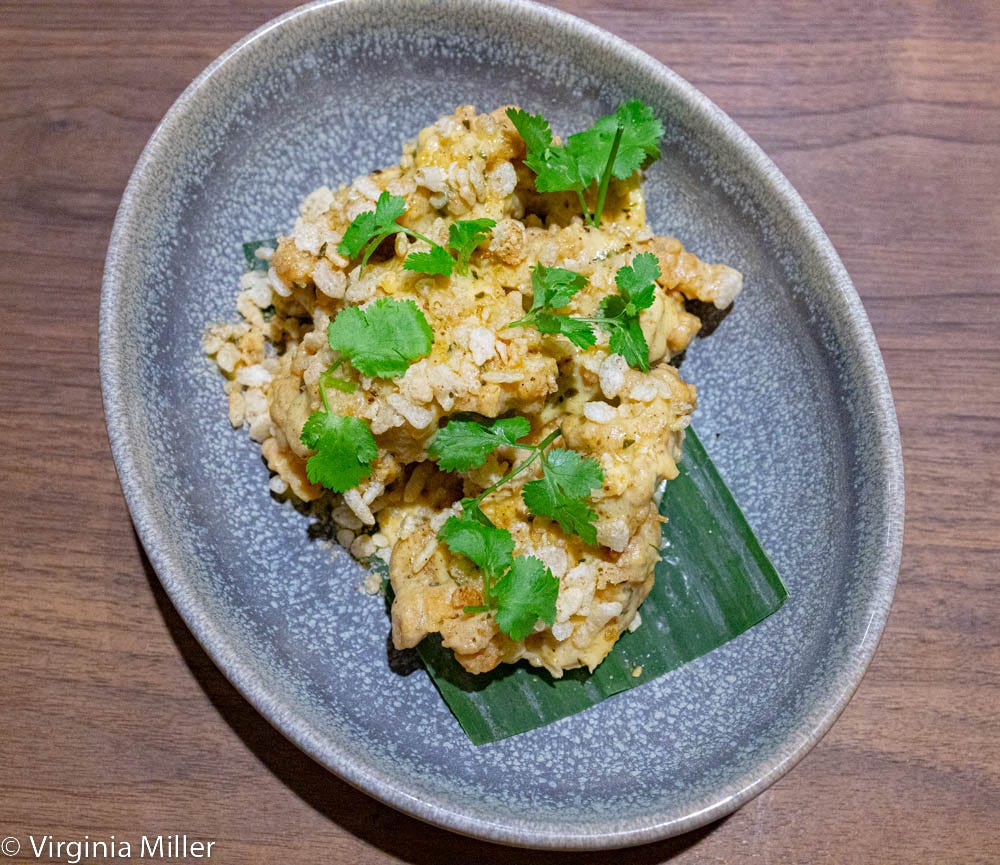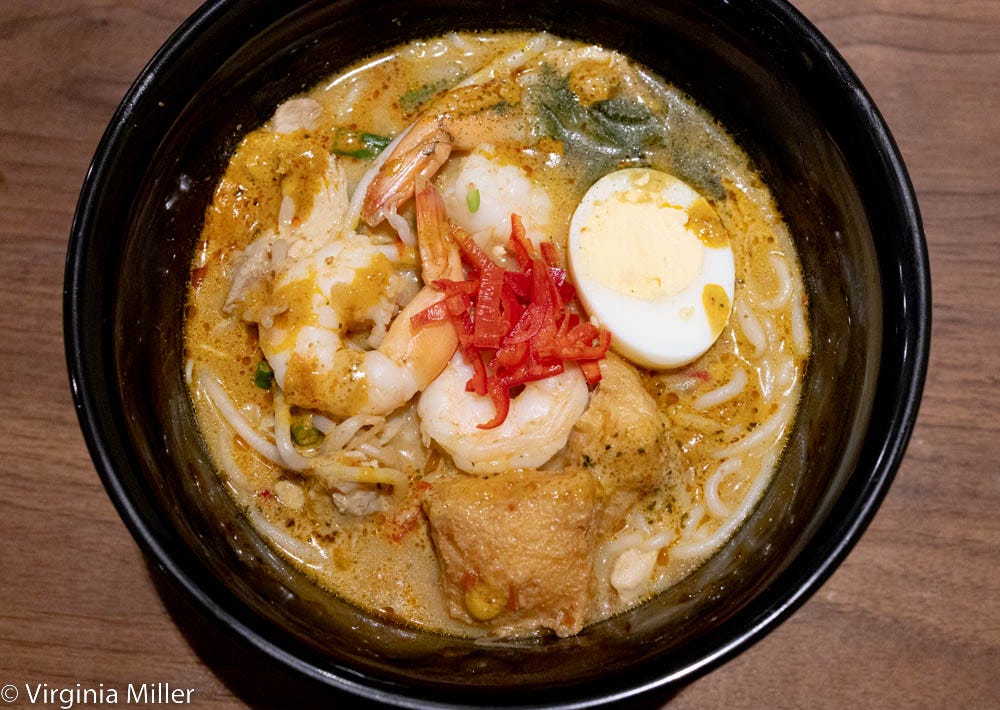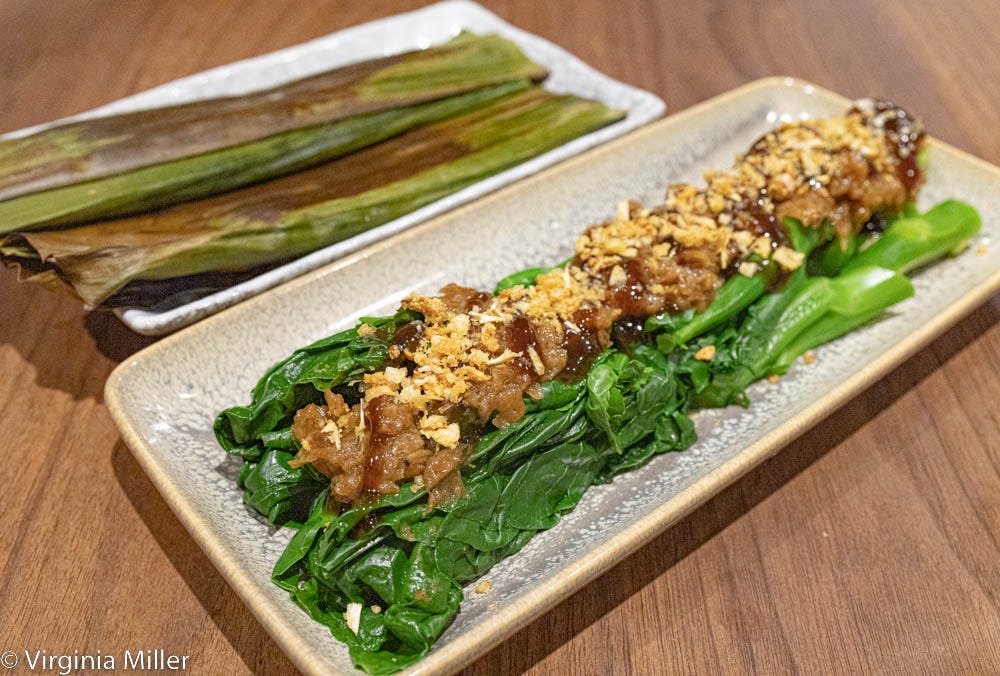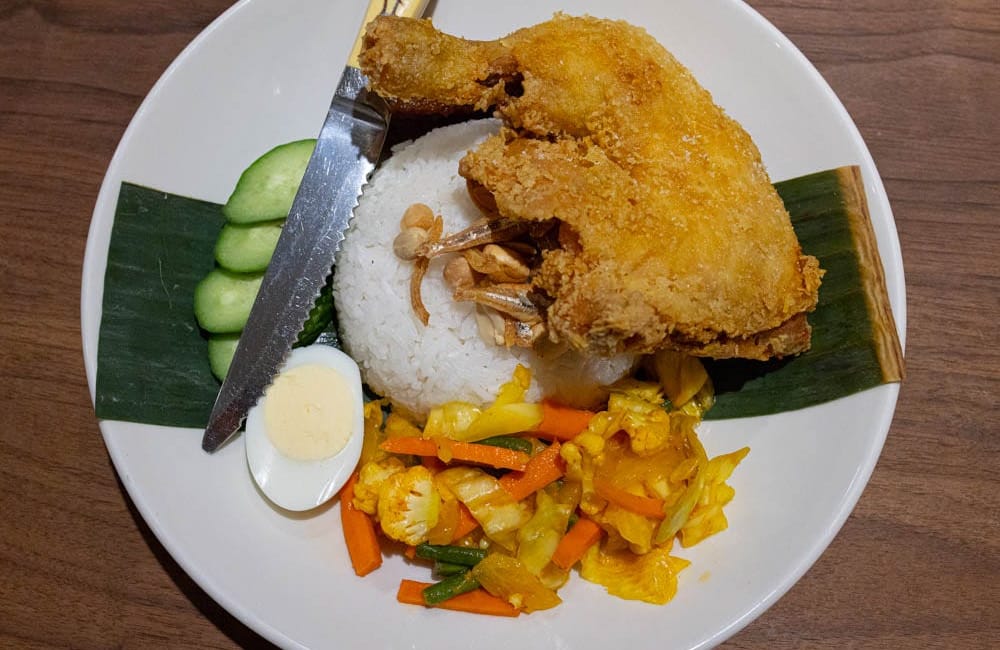In deep dives tasting my way around Singapore, to my love for dear departed places like Indonesian great Warung Siska (chef Siska Silitonga, please come back!), I am crazy about the unique cuisines of this island-heavy corner of Southeast Asia. This includes Malaysia, which deeply informs much of Singaporean cuisine as its very close neighbor and sister. Together, they’re known for incredible dishes like kaya toast or laksa soup (although there are styles of laksa in Indonesia and southern Thailand as well).
So I was certainly delighted when I heard chef Tracy Goh found an outer Noe Valley brick-and-mortar space for her Malaysian pop-up, Damansara, opened October 19, 2022. Goh hails from Damansara Utama, near Malaysia’s capital of Kuala Lumpur, moving to San Francisco in 2012. Growing from cozy dinner parties in her one-bedroom apartment to pop-ups at rented venues, in 2019 she joined La Cocina’s non-profit food business incubator program. And now, her first restaurant.
Let’s get the practicals out of the way: no reservations, dinner-only and a cuisine many of us long for more of means long waits and difficulty getting seats in the intimate, 1100 square-foot space backed by a 12-seat bar lined with wine, beer, sake and soju. Such waits or gambles to cross town with no guarantee of a table is something many of us don’t have time for.

There was also the issue of three of our six dishes coming out immediately, making our two-top table so crowded, the two of us had to play Tetris to make room — and before drinks even came (which we had to ask for twice as we got close to finishing our first three dishes while no drinks had arrived). Per usual, dishes grew cold as we scrambled to photo and taste through all of them at once. These frustrating issues certainly could be new opening kinks — and there was a high ratio of large groups in the small space the night we dined, possibly messing up pacing — but it’s the kind of thing that makes me wish there was takeout/delivery as it’s hard to imagine signing up for that (plus long waits to get in) again.
Beyond opening kinks, servers were friendly, hard-working and sweet, immediately making us feel comfortable as we sat next to the kitchen and bar watching dishes flow out. Small plates of Malaysian street food-style dishes are the way to experience a range of what Goh and team are doing at Damansara. Tender, boneless fried chicken in salted egg sauce and Tracy’s cereal crumb mix is understated but comforting, a crowd pleaser.
But I was smitten with otak-otak muar, a Johor-style (a southern Malaysian state) coconut fish cake grilled in banana leaves. The “paste” looks tamale-like, wrapped in a leaf, composed of fish, coconut milk, spices and herbs. Like the fried chicken, I found the otak-otak comforting and approachable with mellow fish and coconut, kicked up with southeast Asian herbs like lemongrass. Aromatic and filling, it’s merely $8 for two of these delights.

“The best greens” are large stalks of gai lan broccoli served room temperature, retaining more nutrients and nourishment. Warmed by a house onion oyster sauce and fried garlic, the sauce livens up the gai lan, even if it was a bit tough to distribute sauce somewhat evenly across each bite.
When it comes to ubiquitous Singaporean/Malaysian laksa, the beloved spicy noodle dish with different styles across Southeast Asia, I’ve tasted versions that made a deeper impact. Certainly in Singapore or locally from chef Nora Haron-Dunning when Local Kitchen featured her Singaporean dishes (Local is now back to a very typical menu). Damansara’s two-day-cooked broth of fish and chicken stock is made with over 24 ingredients, laden with shrimp, chicken, coconut milk, spices, herbs, puffed tofu, boiled egg and vegetables. I was searching for heat and bold flavor in the muted broth (of note, there is a vegan laksa with a broth base of kelp and mushroom, which I didn’t try). The huge portion of laksa felt prohibitive: the only option is a large $24.50 bowl, which we could barely eat half of for two. Oddly short on broth, our leftovers were mostly noodles (the option for a single serving size would be far preferable, especially to try more dishes vs. having extra of what ended up being our least favorite dish).
The other large plate, nasi lemak, was a winner, and in fact, my favorite dish of the night. A signature Malay dish (in fact, the country’s national dish), this platter of coconut milk rice with ayam goreng (fried chicken) is straightforward yet rich with contrast. While I wish for the more coconut-y, pandan-laden oomph of the unforgettable coconut rice at aforementioned Warung Siska, this is gratifying chicken and rice. As you taste each of the accents with the chicken and rice — egg, pickled veggies, peanuts, crispy anchovies and a killer sambal tumis (spicy shrimp paste of chillies, shallots, garlic, onion) I wished I could take home in large supply — flavor spectrums pop. At $22, it’s filling and hearty, the winning entree of the two larger dishes. Pickle-y acid, umami sardines or that dreamy sambal brought layers to the dish.

Drink options are straightforward, whether basic soju cocktails, mainstream beer brands except for a couple local Barebottle beers, and a short list of mostly California wines. Sake offerings are likewise tight, including yuzu sake and small 300ml bottles of the likes of Okunomatsu Tokubetsu Junmai. I found beloved sakes like Mana 1751 Yamahai Junmai Muroka Genshu available at reasonably low markup by the glass and bottle. These sakes made lovely pairings with aromatic dishes like the otak-otak muar.
We had to finish with kaya toast, of course. Here, it’s a half a sandwich of house milk bread layered with cold butter and pandan-colored (vibrant almost neon green) kaya jam of pandan leaf, coconut custard, palm sugar. Though in-house bread and jam were certainly good, with a heavy bread ratio, it made me miss the great Breadbelly bakery’s version across the city in the Richmond District. Breadbelly’s kaya toast tops even what I had in Singapore with melt-in-your-mouth house milk bread and just the right pinch of sea salt to balance the kaya jam’s tropical sweetness. Damansara’s version tasted more like what I had in Singapore, even if not as revelatory as Breadbelly’s toast.

In those intensive days of food and drink research and awards in Singapore in 2019, I sadly had no time to stay on additional days to visit neighboring Malaysia, much as I longed to. I did eat meals from incredible Malay chefs in Singapore, however, and modern Singaporean-Malay upscale treasures like my favorite, Labyrinth, from chef LG Han. As densely Asian as California is — home to the largest populations of most Asian countries outside Asia — we don’t have as much Malaysian-Singaporean cuisine as we do most other Asian cuisines, despite being one of three regions with the highest Malaysian populations in the U.S. (Queens, LA and Orange Counties in SoCal, and Alameda and Santa Clara counties here in the Bay Area are the largest).
But these are still small populations compared to much larger numbers of Vietnamese or Chinese, for example. Unfortunately, this makes the cuisine harder to come by than thousands of restaurants that may exist in another Asian cuisine, whether traditional or inspired modern takes. Which makes chef Goh’s new opening all the more important. Uneven elements aside, which hopefully get sorted out as they settle in, I’m glad Damansara is here and hope it’s a sign of more Malaysian cuisine to come.
// 1781 Church Street, https://damansarasf.com







